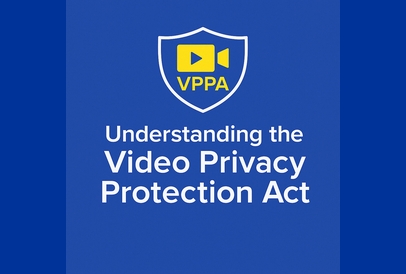Technically speaking, some consent banners aren’t offering the protection they promised. Here we explore the technical limitations of consent management platforms and how you can ensure your company’s consent banner is compliant.
If you’re among the 67% of large US companies that have invested in a Consent Management Platform (CMP) to comply with the myriad of new privacy laws, you might feel a sense of security. After all, these laws—spanning national, international, state, and sector-specific regulations—are increasingly requiring organizations to obtain explicit permission before collecting or sharing user data. However, not all is as it seems.
The Illusion of Security
Implementing a CMP, complete with a cookie consent banner, is a smart move if you’re subject to these laws. But here’s the catch: many of these tools don’t work as advertised. They promise a seamless, out-of-the-box solution, yet technical limitations often undermine their effectiveness, creating a false sense of security. If your CMP isn’t functioning correctly, you could unknowingly be in violation, leaving your organization vulnerable to hefty fines and legal action.
6 Hidden Pitfalls in Cookie Consent Tools
- Inconsistent Cookie Blocking
A major issue is that cookies often drop on the user’s device the moment the page loads—before they’ve had a chance to accept or reject them. Our recent Website Privacy and Compliance Challenges report revealed that over 90% of websites are guilty of this. On average, 18 third-party cookies load before a user even has the opportunity to give their consent. This is not just a minor glitch; it’s a significant compliance risk. - Missing Cookies and Trackers in the Consent Notice
Websites often underreport the tracking technologies they use, leading to serious privacy risks. Even when users hit “Reject All,” tracking tech can still slip through the cracks. Why? They are frequently missed, miscategorized, or completely ignored by consent tools. Worse yet, some piggyback on others, making them nearly invisible. A primary tracker might load additional third-party trackers that your consent tool simply doesn’t catch. These hidden trackers keep collecting data, even when users think they’ve opted out. In one case, a website’s consent banner claimed to manage just nine cookies. The reality? Clicking “Accept All” unleashed 74 cookies—66 of them from third parties. This shows just how easily these hidden trackers can bypass your defenses, putting your organization at risk. - Interplay of Cookies and Pixels
Even if a user rejects a social media cookie, pixels from the same company might still track their data. Ad tech is notoriously good at finding workarounds. The interaction between cookies and pixels means data can still be collected and shared, despite user intentions. - Overlooked Tracking Technologies
Current consent tools tend to focus exclusively on cookies, overlooking other tracking methods like pixels and beacons that don’t rely on cookies. Data can still be collected through these overlooked channels, even when users opt out. Plus, other data collection methods, such as URL tags or fingerprinting, can slip through the cracks. - New ad tech is undetected
The ad tech landscape is constantly shifting. A website might serve different cookies or pixels from one day to the next, depending on updates made by third-party vendors. Without frequent scans—ideally daily—you’re likely missing these changes, exposing your organization to risk. - Lack of Cross-Browser or Device Consistency
Users may believe they’ve opted out on one device, only to inadvertently share data on another due to inconsistent opt-out settings across browsers or devices. This inconsistency can lead to unintentional data sharing, further complicating compliance efforts.
This is part of our series on consent management.
Read more about common mistakes and dark patterns used during consent implementation.
Out of Sight, Out of Compliance = Big Trouble
Ignoring these issues won’t make them go away. Whether intentional or not, if your consent banner isn’t functioning as it should, you’re at risk of violating multiple privacy laws. The GDPR, effective since 2018, and California’s CCPA/CPRA are just the beginning. With 19 states now having passed comprehensive privacy laws, enforcement is ramping up. Non-compliance can result in severe penalties.
Moreover, we’ve seen a rise in demand letters sent by plaintiffs attorneys to organizations with faulty consent banners, accusing them of violating the FTC’s Unfair, Deceptive, and Abusive Practices Act. This is a formal notice that demands action—like paying a debt or fixing a violation—before taking legal action. It’s the last warning shot before a lawsuit or regulatory complaint. The argument for this is that when visitors reject all cookies, they expect their data to remain private. If your banner isn’t up to the task, their trust—and your legal standing—could be at risk.
Is Your Consent Banner Up to Par?
Don’t wait for a legal notice to find out. Request a personalized consent verification report from Lokker. We offer a free sample report that scans a few pages of your website to determine if your consent banner is truly working. We’ll check for missing cookies, active tracking despite “Reject All” selections, and more.
Have questions or concerns? Reach out to us to learn more about our new consent management platform, specifically designed to address these common pitfalls.







